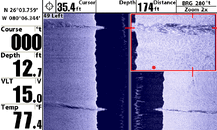- Messages
- 3
- Reaction score
- 0
SeaKing 98 has it nailed, I have the Garmin gpsmap188/sounder set up the same way...spend less time looking at your screen and more time looking here:
http://map.marineplanner.com/mapping/chart/chartindex.cfm
Or here:
www.topozone.com
You would be amazed at the number of dive sites I have found and dive around Puget Sound, that are not mentioned anywhere. Learn to read charts and notices to mariners on the marine planner site, the information is unbelievable, print the chart chunk with the gps numbers and the most rudimentery fish finder around will be enough to drop you right on the site.
If you are going to be out in the salt you need to know how to read charts anyway, and a GPS with backup charts should be a requirement,
Johnny
http://map.marineplanner.com/mapping/chart/chartindex.cfm
Or here:
www.topozone.com
You would be amazed at the number of dive sites I have found and dive around Puget Sound, that are not mentioned anywhere. Learn to read charts and notices to mariners on the marine planner site, the information is unbelievable, print the chart chunk with the gps numbers and the most rudimentery fish finder around will be enough to drop you right on the site.
If you are going to be out in the salt you need to know how to read charts anyway, and a GPS with backup charts should be a requirement,
Johnny





